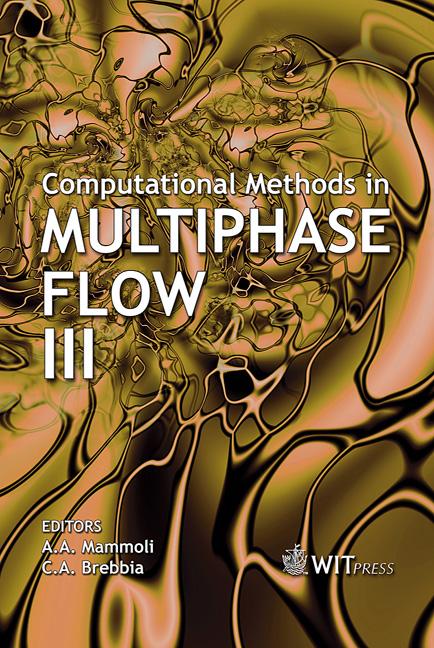Simulations Of Pressure Pulse-bubble Interaction Using The Boundary Element Method
Price
Free (open access)
Transaction
Volume
50
Pages
10
Published
2005
Size
390 kb
Paper DOI
10.2495/MPF050091
Copyright
WIT Press
Author(s)
K. C. Hung, S. W. Fong, E. Klaseboer, C. K. Turangan, B. C. Khoo & T.G. Liu
Abstract
The Boundary Element Method (BEM) is used to simulate the interaction of a bubble with a pressure pulse which resembles a shock wave. The main advantage of this model lies in its enormous speed-up in calculation as compared with other existing methods. The pulse in question is in the form of a step-pulse function with variable width and is incorporated into the Bernoulli equation. Its interaction with a bubble induces the formation of a high-speed jet that accelerates in the pulse direction. Since the dynamic response of the bubble is assumed to be mainly inertia-controlled, the compressibility effect of the surrounding water is neglected. The validation of this methodology comes from the reasonable agreement of the results with those from other established numerical simulations; namely, the Arbitrary Lagrangian Eulerian (ALE) method, the Free Lagrange Method (FLM), and experiments. Detailed comparisons in terms of bubble-shape transformation, collapse times, and jet velocities are discussed. Keywords: boundary element method, shock wave, bubble collapse, jet impact, jet velocity. 1 Introduction Nonlinear bubble dynamics has been the subject of intense investigation in recent years. Often emphasis is placed on the asymmetrical collapse and the formation of a high speed jet of a single gas bubble in an incompressible fluid. This is because this phenomena is perceived to be the main cause of erosion in hydraulic
Keywords
boundary element method, shock wave, bubble collapse, jet impact, jet velocity.





